
Overview
The Product:
Radical AI has four AI products that specialize in assisting users of different needs.
Kai is an AI teaching assistant that helps teachers by generating class material, answering questions, giving creative ideas, and more.




The Project Objective:
After Kai's Version 1 launch in May, our team focused on creating the AI chat bot's History tab while prioritizing visual engagement, intuitiveness, consistency, and accessibility.
By the beginning of July, we delivered a high-fidelity prototype to the development team for implementation.
The Approach:
First, we began familiarizing ourselves with AI in EdTech (Educational Technology) through competitive analysis and domain research. This allowed us to put together a user interview script to collect insight from educators.
After compiling interview notes and transcripts, we began analyzing the data and highlighting key findings and user pain points.
These findings helped to inform mid-fidelity design solutions that we conducted usability tests on before delivering high fidelity prototypes to the development team.
Discovery
Joining this project with a fresh perspective, I started navigating the problem space by conducting a competitive analysis of various EdTech platforms...
Quizlet

Quizlet had a clean layout for their "Your Library" which is a tab comparable to Kai's History.
PROS:
-
Separated by different categories of academic material
-
Flashcard sets, Practice tests, Magic Notes, Expert Solutions, and Folders
-
-
Library is organized by month and year for easy access of material from different time periods.
CONS:
-
The material in the library lacks any edit or delete button.
-
Users should have control over what they would like to do with the material
-
Socrative
Socrative proved to be a platform truly made for it's target users by incorporating State Standards in their "Quizzes" library


Canvas

Canvas includes an expanding sidebar that allows users to open the "History" without leaving the tab they are currently on.
Then, I took a look at GenAI platforms to see how these Library/History tabs could translate to an AI chat bot...
ChatGPT
Gemini


AI chat bots include an expanding sidebar similar to Canvas, but ChatGPT includes an edit and delete button to give users more control.
Lastly, I found a direct competitor to Radical AI's products, as this is an AI chat bot fine-tuned to assist teachers in the sameway Kai is.
Teachers Assistant AI

Teachers Assistant AI has a History tab allows users to have quick access to class material previously generated.
PROS:
-
Prompts labeled by different categories of academic material
-
Allows users to preview content with an expanding drop down
CONS:
-
Word count seems like a feature that may not be used as frequently
-
Adds to clutter on the History tab
-
KEY COMPETITIVE ANALYSIS FINDINGS -
-
Prioritize organization by date and class material
-
Include State Standards information to assist K-12 educators
-
Consider incorporating expanding sidebars or dropdowns to allow user to view content without leaving their screen
Our competitive analysis and domain research led my team to build a user interview script that helped us gather insightful data from educators.
We then began to analyze this data to identify key user pain points and needs...
Synthesis
First, we used Dovetail to each code one user interview transcript.


From my analysis, I identified the codes on the left and consolidated them into 8 overarching categories.
-
"Made teaching easier"
-
"Search issues"
-
"Teaching technique"
-
"Material requirements"
-
"Accessibility
-
"Syncing"
-
"Student engagement"
-
"General needs in AI".

From there, we transferred our individual codes and categories onto one big affinity map on FigJam where we began sorting to find any user needs and pain points that came up across all interviews.

Our analysis helped us identify a few common user needs that came up that would help inform potential design solutions.
STREAMLINED WORKFLOW
Educator want a tool that will speed up their workflow, not slow it down
COLLABORATION
Users want to be able to collaborate with their co-teachers when creating classroom material.
AUTONOMY
Users want to feel in control and involved in creating their AI-generated material.
With these core user needs in mind, we began ideating on potential design solutions.
Ideation
In order to address these three core user needs, our team ideated on mid-fidelity design solutions.
Each team member first created their own version of the tab, which we then consolidated into one design and flow before beginning usability testing.
-
Streamlined Workflow
-
Providing the user with multiple features to organize and find the information they are looking for
-
Bookmarks
-
Sub-tabs of navigation
-
Folders
-
Quick look into card details
-
Filter
-
Implement Kai as an assistant on the History screen incase users want to leverage AI to navigate the tab
-
-


Users have access to a secondary set of tabs, displayed as pills below the navigation bar, to streamline search flow
In this variation, educators have more details & visuals presented on the card for a quick look into the details without having to open up the material altogether.
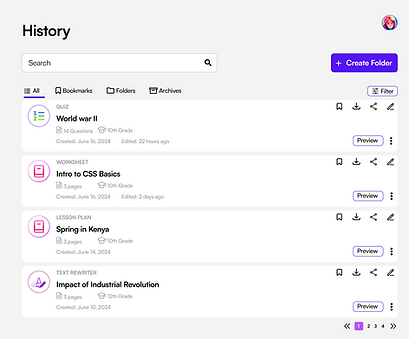
-
Collaboration
-
Allow users of Kai to collaborate on materials generated on the platform
-

Kai users would now be able to add collaborators to a file so teachers can invite their co-teachers.
If they are existing users, a profile will pop up.
If the added email does not belong to an existing user, they are sent an invite to begin onboarding onto the platform.
-
Autonomy
-
Give users the ability to label their materials, and organize information in the ways they prefer
-

Users would now be able to give their items customized labels that provide them with agency over how they interact with AI-generated material, fulfilling their desire for autonomy on AI platforms.
But this was our take on design solutions that would potentially address core user needs. We needed to validate these to confirm we had successfully addressed the problem space.
Before handing off to developers, we decided to conduct moderated usability tests and performed a System Usability Scale (SUS) to test the usability and success metrics of our design.
VALIDATION
We conducted 22 usability tests through the platform Maze, in which 15 of them were asynchronous due to time constraints.

Using Maze, we were able to gather flow completion rates in Kai History, as well as heat map data.
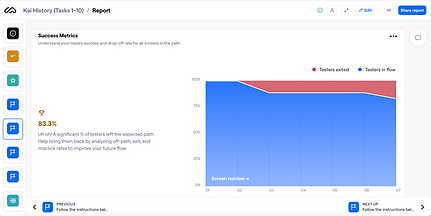

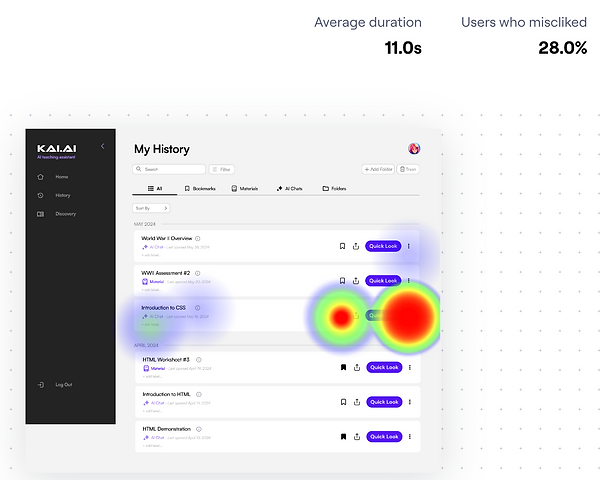
This data allowed us to evaluate which flows may be confusing or unintuitive to users, and which flows are completed successfully -- not needing anything iterations before hand-off.
We also conducted 7 synchronous usability tests in which we were able to gather more quantitative data from participants with an SUS questionnaire.
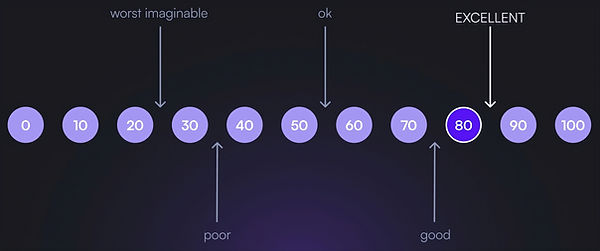
With an SUS score of 80, close to 'Excellent', and detailed insights from Maze highlighting where users were confused, we knew exactly what iterations to make in order to hand off an Excellent design to developers.
final hand-off
In Kai History, users will have a streamlined workflow
Users will be able to browse material through the navigation bar and sub-tabs in order to find what they are looking for with ease.
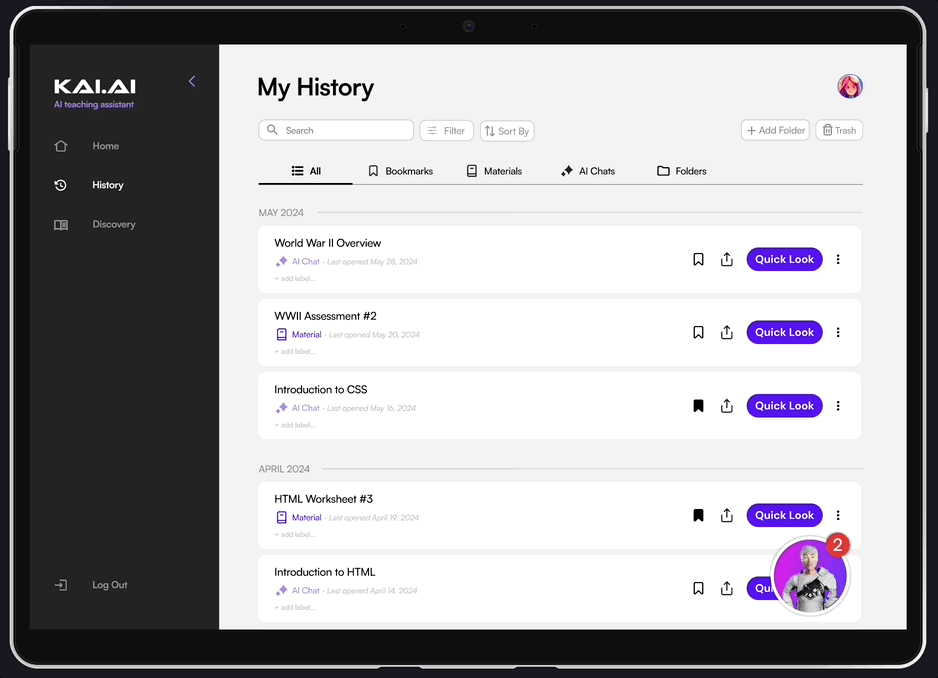
If the user wants to see more details about the card without having to open the file, they can simply hover over it to see more information.
If the user doesn't want to navigate the site on their own? They have their good friend Kai at the bottom right ready to help locate files with a quick message whenever needed.
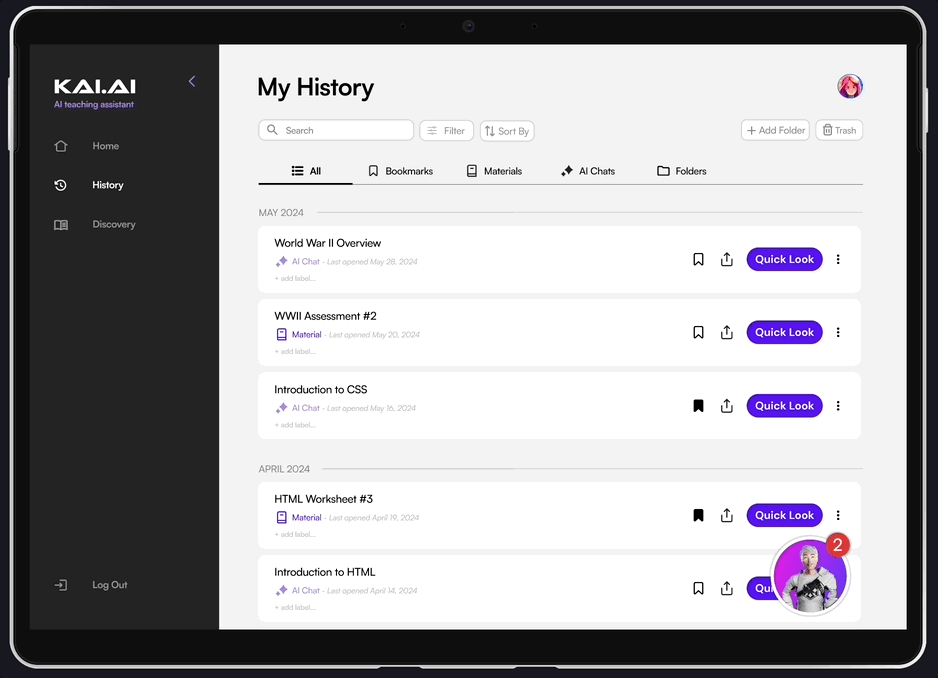
And he will stay out of the way when not needed, with a click of the downward arrow.
Kai users will also be given autonomy over their decisions when using History in their workflow.
What if the user does not want to clutter their bookmarks with everything they want to access later?
They can create their their own labels that can then be filtered for easy access.
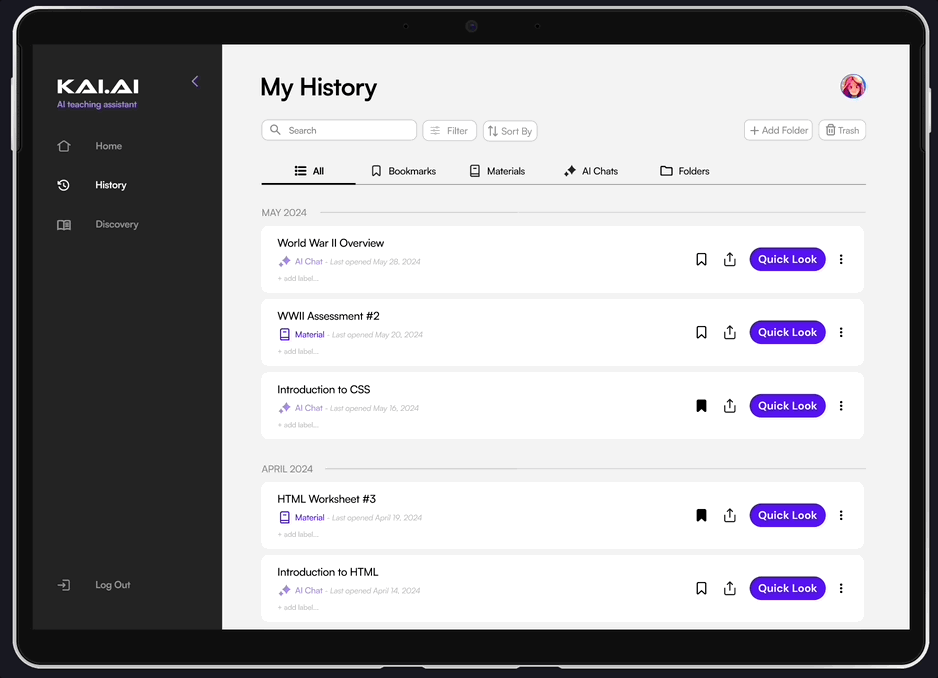
This way, the user has ownership over how they organize material and has agency over how they navigate the History tab without the help of Kai.
Kai History now fosters collaboration by allowing educators to work with co-teachers on material.
Educators can now add co-teachers as collaborators on material if they are existing Kai users.
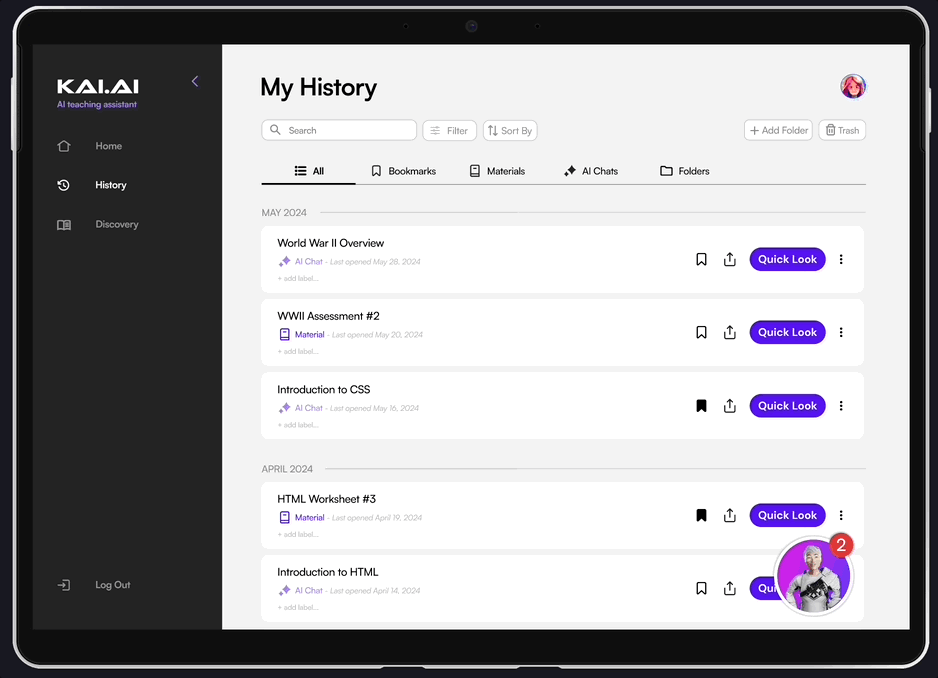
If the user adds an email not linked to a Kai account? They are sent an email inviting them to start the onboarding process for Kai -- encouraging customer growth on the platform.
While we await the metrics from the design's implementation, I'm excited to share that my presentation to internal stakeholders of our team's work was met with an overwhelmingly positive response!




limitations
Conducting a second round of usability testing is crucial to evaluate the design that will be implemented by developers and to verify that the final iterated product aligns with our design intentions and solved confusion found in our first round of testing. Unfortunately, due to time constraints, we were unable to conduct this additional testing.
Based on feedback from this second round, we would iterate on the design to address any identified issues and enhance the overall user experience.
Lastly, to ensure our design is developer-friendly, we would have conducted internal stakeholder interviews with key members of the development team if we were allotted more time. These interviews would focus on understanding their technical constraints, preferences, and feedback on the feasibility of our design. By incorporating their insights early in the process, we would have aimed to align our design solutions with technical capabilities and streamline the implementation phase, ultimately fostering a collaborative environment and ensuring a smoother handoff to development.